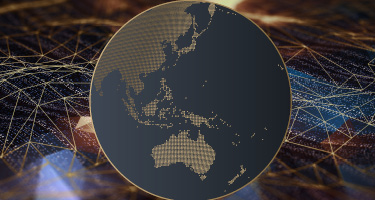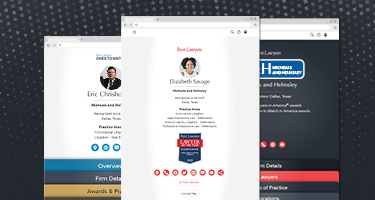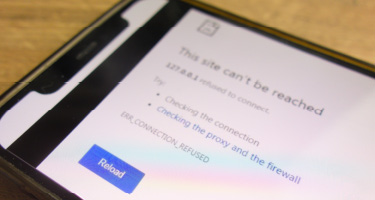This article was originally posted on July 16, 2022 on my Substack newsletter, found here: Webber Immigration News and Analysis | Robert Webber | Substack.
EB-2 NIW is a route to a green card and under Matter of Dhanasar, it is arguably the easiest way for professionals to immigrate to the United States; but that doesn't mean everyone qualifies! (Yet)
This is an overview of EB-2 NIW, which is a route to U.S. permanent resident (green card) status. If you are new to U.S. immigration law, you might want to review my earlier post as an overview on the whole U.S. immigration law system. You can find that earlier post here.
This post is explicitly a primer on EB-2 NIW so experienced people might not find anything of use here. I plan to create a series of posts with in-depth discussion on various aspects of EB-2 NIW. This series is one of the main reasons I have created a substack newsletter. I want to be a credible resource of information on this and other subjects. I am concerned about what I think is a high level of misinformation ‘out there’.
Please watch for more posts in the coming weeks.
EB-2 NIW: Self-Petition Possible
“EB-2 NIW” is an abbreviation for “Employment-Based 2nd Preference National Interest Waiver.” EB-2 NIW is a route to green card status and it is a route that can be done either with an employer sponsor or without an employer sponsor. The USCIS website discusses EB-2 NIW in detail here.
EB-2 NIW is one of the very limited ways that someone can self-petition for a green card. This is one of the major reasons for its appeal. Any person in the United States or anywhere in the world can self-petition for a green card using EB-2 NIW. To be clear, EB-2 NIW: Self-Petition Possible that does not mean anyone can get approved. But the criteria is relatively subjective and open-ended so there are a lot of possible ways to qualify.
Apart from people born in India or China, the wait time, at least right now, to obtain a green card is relatively reasonable through EB-2 NIW. (“Relative” being the key word).
— A person processing in the United States might be able to get a green card 12-18 months after filing an EB-2 NIW petition.
— It might be more like 24 months for people applying from abroad.
Also, importantly, if someone takes the time to understand the EB-2 NIW standards, he or she can BUILD THEIR OWN PROFILE. This is so important.
What I mean is that if you take time to understand EB-2 NIW and the criteria for EB-2 NIW, you - through your own efforts - might not be eligible now, but by spending 12+ months building your profile (or more time depending on where you start) - you could make yourself eligible for EB-2 NIW.
This is so important because I know there are lots of people who would like to immigrate to the United States legally but they lack any understanding of how to do it.
Sadly, some people are ‘sold’ EB-2 NIW as a solution but they are not actually eligible. My hope is to educate people in a credible way so that if they are not currently eligible, they can try to build their profile and make themselves eligible. This is not a scheme. This is simply articulating the criteria and having you do the hard work, over time, to build a profile that can lead to a successful EB-2 NIW petition.
USCIS will use a 3-prong test to review any EB-2 NIW Petition.
Regarding EB-2 NIW, and the current standard, some history —
USCIS will use a 3-prong test to review any EB-2 NIW Petition. In December 2016, one of the last things the Obama Administration did in immigration was issue a precedent decision called Matter of Dhanasar. This decision created the administrative standard to be used by the U.S. Immigration Service (USCIS) in reviewing EB-2 NIW cases. Somewhat surprisingly, Matter of Dhanasar survived the Trump Administration, which seemed to try to withdraw or modify anything the Obama Administration had done on immigration; but the Trump Administration did not rescind or otherwise tamper with Matter of Dhanasar.
You can read Matter of Dhanasar here.
Matter of Dhanasar created a 3-prong test that USCIS officers are supposed to use to assess EB-2 NIW filings.
- Prong 1 = The foreign national’s proposed endeavor has both substantial merit and national importance; and
- Prong 2 = The foreign national is well-positioned to advance the proposed endeavor; and
- Prong 3 = On balance, it would be beneficial to the United States to waive the requirements of a job offer and thus a labor certification.
To take a step back, it is important to understand the general idea in U.S. immigration law is that if someone wants to immigrate to the United States based on employment and job-related skills, an employer must sponsor the person. And the employer must document a shortage of qualified and willing U.S. workers for the position offered. Thus, the general idea is that the employer must go through the PERM labor certification process which is governed by the U.S. Department of Labor and requires an employer to document a shortage of qualified and willing U.S. workers.
What is happening in EB-2 NIW is that the candidate is getting a WAIVER of the employer sponsorship requirement and a WAIVER of the labor market test. Why would someone get this WAIVER? Because they are doing something, or plan to do something, that is ‘special’ - and so the 3-prong test in Dhanasar is how USCIS officials are supposed to assess whether what the person is doing is sufficiently special to skip the general process which requires an employer.
Matter of Dhanasar was explicitly supposed to liberalize the EB-2 NIW category which was considered to be too narrow and too strict under the earlier standard known as Matter of NYSDOT.
The following are key aspects of any EB-2 NIW case, based on the current 3-prong test -
- What is the proposed endeavor? (Super important!)
- Does the proposed endeavor have substantial merit and national importance?
- Is the sponsored candidate well-positioned to advance the proposed endeavor?
- Why should USCIS approve this case versus having you go through PERM?
A lot of people are filing EB-2 NIW cases and they are getting denied because their proposed endeavor is no good.
A lesser number of people, from what I can tell, are getting denied because they are not well-positioned.
In separate upcoming posts, I will try to go into detail on what constitutes a viable “proposed endeavor” and also what kinds of endeavors have “national importance.” These are very important concepts and many EB-2 NIW cases are denied for failing to address these concepts sufficiently.
Available to F-1 and J-1 Students and Scholars
F-1 and J-1 students and scholars traditionally would look at H-1B work visas as a next option to stay in the United States after their F-1/J-1 programs ended. But because there is so much demand on the H-1B visa category which is subject to a very low annual limit, many F-1 and J-1 visa holders look to EB-2 NIW as a possible route to a green card.
For F-1 and J-1 visa holders born in India or China, the appeal of EB-2 NIW is much more limited than people born in every other country. This is because there are annual limits to green cards based on country of birth and these “per country quotas” mean that EB-2 NIW is still a long road for people born in India or China. This does not mean that EB-2 NIW has no value to someone born in India or China; but the upside benefit is more complex to analyze for people born in India or China.
But overall, because of the H-1B cap and the overall hassle at getting sponsored for H-1B status, F-1 and J-1 visa holders are increasingly looking to EB-2 NIW as an option to stay in the United States.
Available H-1B and other Temporary Work Visa Holders
Generally if someone is in the United States on a temporary work visa, like H-1B or L-1, or some other temporary work visa, and you want to stay in the United States indefinitely, you look for your employer (the same one who sponsored your temporary work visa) to sponsor you for a green card through PERM.
But right now, in summer 2022, PERM is ridiculously slow. And as a result of that slow processing, more and more H-1B and other temporary work visa holders are looking at EB-2 NIW as a possible alternative to PERM.
One big advantage of EB-2 NIW versus PERM is that the time it takes to prepare and file a case can be much faster than PERM.
In PERM, there is a required 9141 prevailing wage request, a required recruitment period, and then the actual processing of the 9089 PERM labor certification application. All that can easily take 18 months right now.
But an EB-2 NIW case can be prepared rigorously in 2-4 months (sometimes faster in extreme situations).
Available to Professionals Abroad
One category of people who are really taking an interest in EB-2 NIW are people who are abroad and want to immigrate to the United States. This is I believe the newest category of people taking interest in EB-2 NIW in a big way.
Unfortunately I think this is the category of people who have most been led astray as to what EB-2 NIW is and who can qualify. I note that traditionally people would immigrate to the United States mainly through family immigration; or perhaps they would come as F-1 international students and then progress to an H-1B and then an employer sponsored green card. Those were common routes.
We are seeing now a greater variety of situations and one of the emerging situations is the global middle class learning about EB-2 NIW and seeing it as a vehicle to immigrate to the United States. To be clear, EB-2 NIW is a potential vehicle to immigrate to the United States but it is not going to be successful for everyone.
REMEMBER: You can build your own profile!
One of my major themes in the coming posts will be to explain how people are getting denied. By analyzing denials hopefully you all will understand what is being done incorrectly. I will also highlight cases my firm is handling which will hopefully be successful case studies - to understand what works.
But it is important to remember that perhaps the most attractive thing about EB-2 NIW besides the fact that you can self-petition is that you can build your own profile. So by studying why some individuals are deficient, you can build what is hopefully a sufficient profile and succeed in EB-2 NIW.
The fact remains that the United States, despite all it recent challenges, remains a very attractive place for professionals to live and raise families and pursue “the American Dream.” Post-pandemic, there are lots of job opportunities in almost every sector of the economy for ambitious professionals; but to get hired, foreign nationals generally need green cards. Employers do not like dealing with work visas and green card sponsorship. It can take a long time and be uncertain. U.S. employers are notorious for wanting people who are ready to work and experienced. There are many qualified and experienced professionals outside the United States and it is only the lack of work authorization that keeps them out of the U.S. job market.
EB-2 NIW provides the possibility of getting a green card in a relatively reasonable amount of time. However, the mistake that is made is that people don’t understand the category and very charismatic sales-oriented lawyers and law firms and consultants are, in my view, overselling the opportunity.
Thanks for reading. I hope this overview and primer has been useful. If so, please stay tuned for more commentary and analysis on EB-2 NIW in the coming weeks.
















